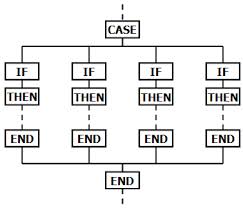 For those of you following the last few blog posts, you know that I’m reading “The Marshmallow Test: Mastering Self-Control“ written by researcher Walter Mischel, which is a book about human behavior, delayed reward and resisting temptation. There are tons of organizational development lessons throughout the book, and there is so much that non-profit organizations can learn from this research.
For those of you following the last few blog posts, you know that I’m reading “The Marshmallow Test: Mastering Self-Control“ written by researcher Walter Mischel, which is a book about human behavior, delayed reward and resisting temptation. There are tons of organizational development lessons throughout the book, and there is so much that non-profit organizations can learn from this research.
For example, chapter five — “The Best-Laid Plans” — looks at a concept researchers labeled “hot stimulus” (aka temptation), which is one important factor in the entire delayed reward equation at the root of the marshmallow test. In this chapter, they looked at strategies that children were asked to use in order to improve the amount of time they spent on a project before caving in to a distraction or reward.
One of the strategies that seems to work well is creating “If-Then Plans.” The way this works is when a child is presented with a situation like a foreseeable distraction or temptation, they automatically do something that helps insert their self-control. Here is how Mischel talks about this phenomenon on page 98:
“With practice, the desired action of an implementation plan becomes initiated automatically when the relevant situation cues occur:
- When the clock hits 5 pm, I will read my textbook;
- I will start writing the paper the day after Christmas;
- When the dessert menu is served, I will not order chocolate cake;
- Whenever the distraction arises, I will ignore it.
And implementation plans work not just when the IF is in the external environment (when the alarm rings, when I enter the bar) but also when the cue is your internal state (when I’m craving something, when I’m bored, when I’m angry).
When I read this chapter, it got me thinking about how powerful IF-THEN planning can be and has been for countless numbers of smart non-profit organizations. The following are just a few examples:
- IF our executive director resigns or leaves some day, then we will a) hire an interim executive director, b) form an executive search committee, etc.
- IF our largest funding source cuts or stops funding our agency, then we will cut XYZ from the operating budget and immediately access X% of funding from our reserve funds and raise Y% of funding from a special appeal to select major gifts donors.
- IF our capital campaign feasibility study comes back with news that we can raise less than expected, then we will scale the building project back in the following ways: X, Y, and Z.
Developing IF-THEN plans for your agency on a variety of different issues can help your organization get through tough situations like executive turnover. More importantly, it will help you avoid distracting shiny-object-types-of-issues that are endemic to most crisis situations.
Has your agency developed a succession plan or anything else that qualifies as an “IF-THEN” plan or strategy? Please scroll down and share your thoughts and experiences in the comment box below. I would love to hear about your successes and your lessons learned.
Here’s to your health!
Erik Anderson
Founder & President, The Healthy Non-Profit LLC
www.thehealthynonprofit.com
erik@thehealthynonprofit.com
http://twitter.com/#!/eanderson847
http://www.facebook.com/eanderson847
http://www.linkedin.com/in/erikanderson847

 As I explained in last week’s post titled “
As I explained in last week’s post titled “ I believe the answer is as simple as evaluating what “The Ant” would do if they were a member of your board of directors.
I believe the answer is as simple as evaluating what “The Ant” would do if they were a member of your board of directors.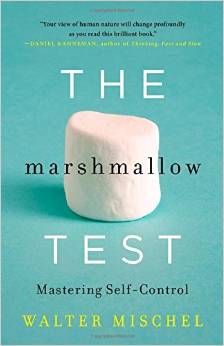 I’ve been on the road a lot lately. When this occurs, I typically look for eBooks to help pass the time during airport delays and other frustrating travel hiccups. Last week, I downloaded
I’ve been on the road a lot lately. When this occurs, I typically look for eBooks to help pass the time during airport delays and other frustrating travel hiccups. Last week, I downloaded 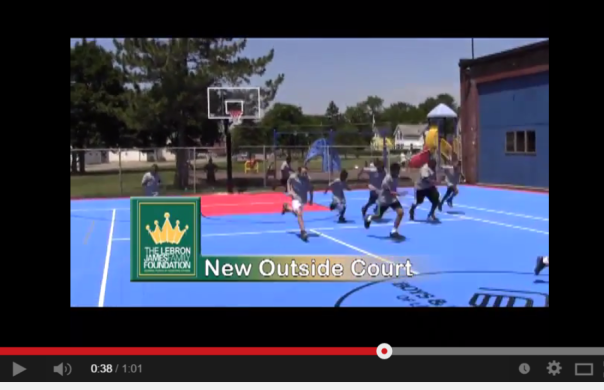
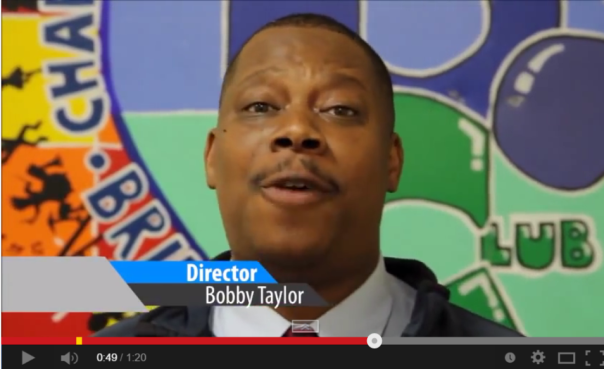
 If you Google the definition of “Pandora’s Box,” the all-knowing internet oracle says the term means: “a process that generates many complicated problems as the result of unwise interference in something.” I love this expression, and I used it a few months ago when talking to the board president of a non-profit organization who was describing to me how they were handling a complaint about the agency’s executive director.
If you Google the definition of “Pandora’s Box,” the all-knowing internet oracle says the term means: “a process that generates many complicated problems as the result of unwise interference in something.” I love this expression, and I used it a few months ago when talking to the board president of a non-profit organization who was describing to me how they were handling a complaint about the agency’s executive director. I was on the phone with an old friend a few days ago, and our conversation turned to two naming opportunities with which he was struggling. One situation dealt with naming his agency’s golf outing after an aging volunteer who is the central organizing force behind the event. The other situation pertained to a planned giving prospect who is contemplating the possibility of leaving a very large legacy gift.
I was on the phone with an old friend a few days ago, and our conversation turned to two naming opportunities with which he was struggling. One situation dealt with naming his agency’s golf outing after an aging volunteer who is the central organizing force behind the event. The other situation pertained to a planned giving prospect who is contemplating the possibility of leaving a very large legacy gift. Finally, have you thought about the permanent nature of putting someone’s name on something and what happens when life throws your agency a curveball? If I’m being too cryptic at this time in the morning, I want you to think about what you would’ve done if you had accepted large donations with naming opportunities from either of these infamous gentlemen:
Finally, have you thought about the permanent nature of putting someone’s name on something and what happens when life throws your agency a curveball? If I’m being too cryptic at this time in the morning, I want you to think about what you would’ve done if you had accepted large donations with naming opportunities from either of these infamous gentlemen: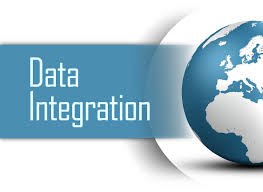 One of my many jobs in this world is being the webmaster and community manager for a large national organization’s resource development website, which essentially acts as a fundraising toolbox for their local affiliates. One of the many functions of the website is an “Ask the Expert” service where front line staff can ask resource development questions and receive an answer in approximately 24 hours. A few weeks ago a question was asked about donor databases and QuickBooks Online. While I’m happy with our answer, I’m wondering if there isn’t more advice that could’ve been provided.
One of my many jobs in this world is being the webmaster and community manager for a large national organization’s resource development website, which essentially acts as a fundraising toolbox for their local affiliates. One of the many functions of the website is an “Ask the Expert” service where front line staff can ask resource development questions and receive an answer in approximately 24 hours. A few weeks ago a question was asked about donor databases and QuickBooks Online. While I’m happy with our answer, I’m wondering if there isn’t more advice that could’ve been provided. OK . . . you’ve had a chance to read the question and answer. What additional advice would you have provided? Do you use QuickBooks Online and a donor database with a data integration bridge? If so, what can you tell us about the data bridge and the database (or CRM)?
OK . . . you’ve had a chance to read the question and answer. What additional advice would you have provided? Do you use QuickBooks Online and a donor database with a data integration bridge? If so, what can you tell us about the data bridge and the database (or CRM)? There has been lots written throughout the years about the psychology of philanthropy. Most of the stuff I’ve read has been right on target with regards to why people open their wallets/purses and give money to a non-profit organization. I’ve been asked to revise a whitepaper titled “Why People Do and Don’t Give Money” for a national organization’s online fundraising toolbox to which their local affiliates have access. So, I thought I’d ask you and the rest of the DonorDreams blog community for a little help this morning. Would you please be so kind and give me one minute (or less) of your time at the end of this post?
There has been lots written throughout the years about the psychology of philanthropy. Most of the stuff I’ve read has been right on target with regards to why people open their wallets/purses and give money to a non-profit organization. I’ve been asked to revise a whitepaper titled “Why People Do and Don’t Give Money” for a national organization’s online fundraising toolbox to which their local affiliates have access. So, I thought I’d ask you and the rest of the DonorDreams blog community for a little help this morning. Would you please be so kind and give me one minute (or less) of your time at the end of this post? I ran across an old board development handout the other day, and it made me laugh. So, I decided to share its essence with you today and ask for your thoughts and opinions. The handout started off with the following two sentences (and I’ve changed the names to protect the innocent):
I ran across an old board development handout the other day, and it made me laugh. So, I decided to share its essence with you today and ask for your thoughts and opinions. The handout started off with the following two sentences (and I’ve changed the names to protect the innocent): After spending a nice long Labor Day weekend in Michigan at a friend’s summer cottage on Saginaw Bay, I am now faced (as are you) with the long slide towards the end of the year. Not only can I not wear white clothing now that Labor Day has come and gone, but my fundraising friends should be starting to engage board, staff and fundraising volunteers in developing their agency’s written 2015 resource development plan.
After spending a nice long Labor Day weekend in Michigan at a friend’s summer cottage on Saginaw Bay, I am now faced (as are you) with the long slide towards the end of the year. Not only can I not wear white clothing now that Labor Day has come and gone, but my fundraising friends should be starting to engage board, staff and fundraising volunteers in developing their agency’s written 2015 resource development plan.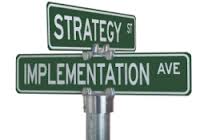 Having two degrees in planning, I tend to get overly excited about developing plans, and some of my past resource development plans have been 50 and 75 pages in length (Yeah, I have gotten carried away). Those plans included elements such as:
Having two degrees in planning, I tend to get overly excited about developing plans, and some of my past resource development plans have been 50 and 75 pages in length (Yeah, I have gotten carried away). Those plans included elements such as: